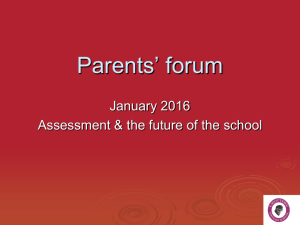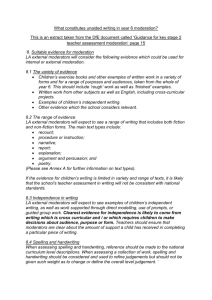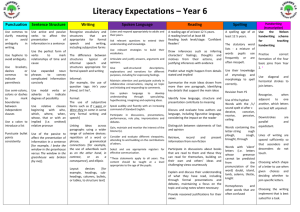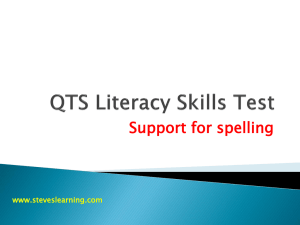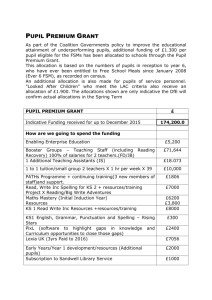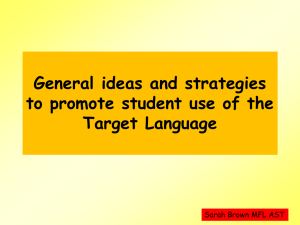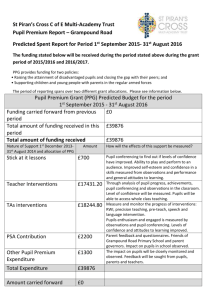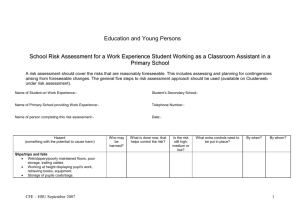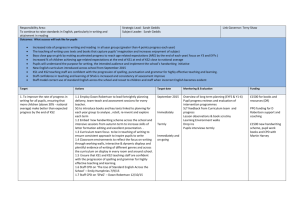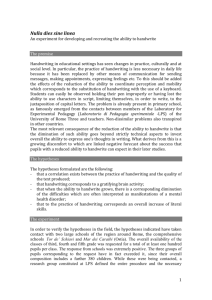Band 6 Writing Assessment Grid 2015 2016 interim
advertisement
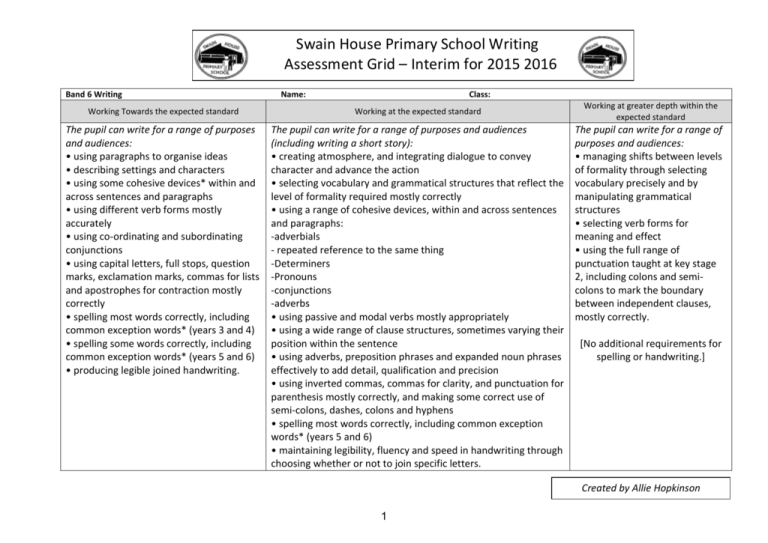
Swain House Primary School Writing Assessment Grid – Interim for 2015 2016 Band 6 Writing Name: Class: Working Towards the expected standard Working at the expected standard The pupil can write for a range of purposes and audiences: • using paragraphs to organise ideas • describing settings and characters • using some cohesive devices* within and across sentences and paragraphs • using different verb forms mostly accurately • using co-ordinating and subordinating conjunctions • using capital letters, full stops, question marks, exclamation marks, commas for lists and apostrophes for contraction mostly correctly • spelling most words correctly, including common exception words* (years 3 and 4) • spelling some words correctly, including common exception words* (years 5 and 6) • producing legible joined handwriting. The pupil can write for a range of purposes and audiences (including writing a short story): • creating atmosphere, and integrating dialogue to convey character and advance the action • selecting vocabulary and grammatical structures that reflect the level of formality required mostly correctly • using a range of cohesive devices, within and across sentences and paragraphs: -adverbials - repeated reference to the same thing -Determiners -Pronouns -conjunctions -adverbs • using passive and modal verbs mostly appropriately • using a wide range of clause structures, sometimes varying their position within the sentence • using adverbs, preposition phrases and expanded noun phrases effectively to add detail, qualification and precision • using inverted commas, commas for clarity, and punctuation for parenthesis mostly correctly, and making some correct use of semi-colons, dashes, colons and hyphens • spelling most words correctly, including common exception words* (years 5 and 6) • maintaining legibility, fluency and speed in handwriting through choosing whether or not to join specific letters. Working at greater depth within the expected standard The pupil can write for a range of purposes and audiences: • managing shifts between levels of formality through selecting vocabulary precisely and by manipulating grammatical structures • selecting verb forms for meaning and effect • using the full range of punctuation taught at key stage 2, including colons and semicolons to mark the boundary between independent clauses, mostly correctly. [No additional requirements for spelling or handwriting.] Created by Allie Hopkinson 1 Swain House Primary School Writing Assessment Guidance - Interim for 2015 2016 Each of the three standards within the interim framework contains a number of ‘pupil can’ statements. To demonstrate that pupils have Writing Targets met a standard within this interim framework, teachers will need to have evidence that a pupil demonstrates attainment of all of the statements within that standard and all the statements in the preceding standard(s). Some of the statements contain qualifiers (some and most) to indicate that pupils will not always consistently demonstrate the skill required. Further guidance to support teachers in making consistent judgements on these will be provided as part of the exemplification material. However, where they have been used, they have consistent meaning with ‘most’ indicating that the statement is generally met with only occasional errors and ‘some’ indicating that the skill/knowledge is starting to be acquired, and is demonstrated correctly on occasion, but is not consistent or frequent. Teachers should refer to the national curriculum programmes of study for items marked * (e.g. to exemplify the words that pupils should be able to spell). Where pupils have a physical disability that prevents them from being able to write, the statements relating to handwriting can be excluded from the teacher assessment. Where pupils are physically able to write and meet all of the statements except for being able to produce legible handwriting, they may be awarded the ‘expected standard’ but cannot be awarded the ‘greater depth’ standard. This refers to the final statements within ‘Working towards’ and ‘Working at the expected standard’. Created by Allie Hopkinson 2
